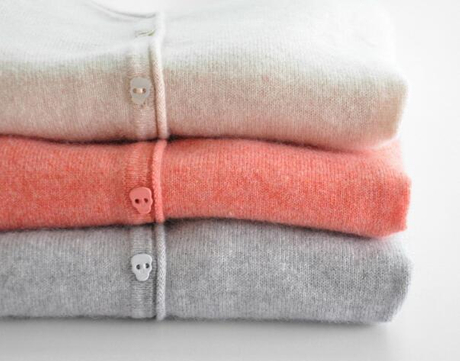Cashmere is a beautiful and luxurious material that has been prized for centuries. It is made from the soft and warm undercoat of cashmere goats, which are typically raised in regions of the world with cold climates. Cashmere is known for its softness, durability, and ability to keep you warm in cold weather. However, as many people are aware, it can also be quite expensive. In this post, we'll explore why this is the case and take a closer look at the production of cashmere.
The Quality of Cashmere
One of the primary reasons that cashmere is so expensive is that it is a high-quality material. The fibers of cashmere are much finer than those of wool, which means that the resulting fabric is much softer and silkier. Cashmere also has a unique ability to trap heat, which makes it an excellent insulator. This is why cashmere sweaters and coats are so popular in cold climates.
Another factor that contributes to the high quality of cashmere is the length of the fibers. Cashmere fibers are long and thin, which makes them much stronger than other types of wool. This means that cashmere garments are less likely to pill or wear out, which means they will last longer and you'll get more wear out of them over time.
The Rarity of Cashmere
Another reason that cashmere is so expensive is that it is a relatively rare material. Cashmere goats produce only a small amount of undercoat each year, which means that it takes a lot of goats to produce a significant amount of cashmere. Additionally, not all cashmere goats produce the same quality of fiber. The best-quality cashmere comes from goats that are raised in remote regions of the world, such as Mongolia or Nepal, where the weather is cold and the goats are able to grow thick coats of undercoat.
Because cashmere is a rare material, it is in high demand, especially among luxury fashion brands. This drives up the price, as these brands are willing to pay a premium for the best-quality cashmere. This, in turn, makes it more expensive for consumers to purchase cashmere products, as they must pay the premium price charged by these brands.
The Labor Intensive Process of Cashmere Production
The production of cashmere is a labor-intensive process that involves several steps, including shearing, separating, and spinning the fibers. The first step is shearing the goats, which involves cutting off their thick undercoat. This is typically done by hand, as the delicate fibers can be easily damaged by mechanical shearing machines. The undercoat is then separated from the coarser outer coat and any other impurities, such as dirt or vegetation. This is typically done by hand as well.

Once the undercoat has been separated, it is spun into yarn, which can then be used to create cashmere garments. This is typically done on spinning wheels, which can be operated by hand or by machine. However, even when machines are used, the process is still quite time-consuming, as the delicate fibers must be handled with care to avoid damage.
Because the process of producing cashmere is so labor-intensive, it is more expensive than producing other types of wool. Workers must be paid to shear the goats and separate the fibers by hand, which adds to the cost of production. Additionally, because cashmere goats are raised in remote regions of the world, transportation costs can also be high, making it more expensive to produce and transport cashmere products.
The Ethics of Cashmere Production
While cashmere is undeniably a beautiful and luxurious material, there has been growing concern in recent years about the ethics of cashmere production. This is because the demand for cashmere has led to overgrazing in some regions, which can damage the delicate ecosystems in these areas. Additionally, there are concerns about the treatment of cashmere goats and the workers who produce the material.

Some animal rights groups have raised concerns about the treatment of cashmere goats, particularly in regions of the world where animal welfare laws are not strict. There have been reports of goats being mistreated or even killed for their cashmere, which is obviously a concern for anyone who cares about animal welfare.
Additionally, there have been concerns about the treatment of workers who produce cashmere. Many cashmere garments are produced in low-wage countries, where workers may be paid very little and forced to work under difficult conditions. This has led to criticism of the fashion industry as a whole and calls for more sustainable and ethical production practices.
The Bottom Line
There are many reasons why cashmere is so expensive, including its high quality, rarity, and labor-intensive production process. However, it's important to consider the ethical concerns that come with cashmere production and consumption. When buying cashmere products, it's important to look for brands that are committed to sustainable and ethical practices, and to be aware of the potential environmental and animal welfare issues associated with this luxurious material.
At the end of the day, cashmere is a beautiful and luxurious material that will always be in demand. But it's up to us as consumers to ensure that we are making responsible choices when it comes to our consumption of this precious resource.
If you are searching about Why Are Some Cashmere Sweaters So Expensive? | Ewsca Cashmere News you've came to the right page. We have 5 Images about Why Are Some Cashmere Sweaters So Expensive? | Ewsca Cashmere News like Why Cashmere Is So Expensive? - Imfieldcashmere, Why is Cashmere wool so expensive? - 2dPoint and also Why Are Some Cashmere Sweaters So Expensive? | Ewsca Cashmere News. Read more:
Why Are Some Cashmere Sweaters So Expensive? | Ewsca Cashmere News
 www.ewsca-cashmere.com
www.ewsca-cashmere.com cashmere expensive naturally
Why Cashmere Is So Expensive? - Imfieldcashmere
 www.imfieldcashmere.com
www.imfieldcashmere.com Why Is Cashmere Wool So Expensive? - 2dPoint
 2dpoint.net
2dpoint.net expensive
Why Is Cashmere So Expensive? (Top 12 Reasons)
 www.thecoldwire.com
www.thecoldwire.com cashmere reasons
Is Cashmere Cruel? How This Luxury Material Is Produced
 theminimalistvegan.com
theminimalistvegan.com Is cashmere cruel? how this luxury material is produced. Cashmere expensive naturally. Why cashmere is so expensive?